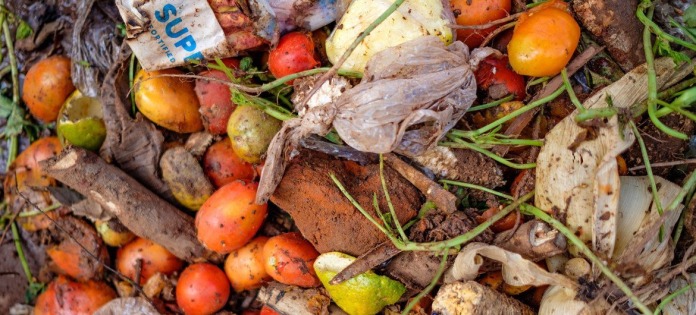
Sample this. In 2022, 783 million people were affected by hunger and a third of humanity faced food insecurity. In the same year, households across all continents wasted over 1 billion meals a day, says a UN Environment Programme (UNEP) report published on 27 March 2024, just a day ahead of the International Day of Zero Waste.
And it is not just a ‘rich country’ problem. Levels of household food waste differ in observed average levels for high-income, upper-middle, and lower-middle-income countries by just 7 kg per capita, the report said.
At the same time, hotter countries appear to generate more food waste per capita in households, potentially due to higher consumption of fresh foods with substantial inedible parts and a lack of robust cold chains.
In middle-income countries, for example, rural areas are generally wasting less. One possible explanation is in the recycling of food scraps for pets, animal feed, and home composting in the countryside, the report says.
Higher seasonal temperatures, extreme heat events, and droughts make it more challenging to store, process, transport, and sell food safely, often leading to a significant volume of food being wasted or lost.
The report recommends focusing efforts on strengthening food waste reduction and composting in cities.
Some 19% of food available to consumers was lost overall at retail, food service, and household levels. That is in addition to around 13% of food lost in the supply chain, as estimated by the UN Food and Agriculture Organization (FAO), from post-harvest up to the point of sale.
Most of the world’s food waste comes from households, totaling 631 million tons – or up to 60% — of the total food squandered. The food service and retail sectors were responsible for 290 and 131 million tonnes, accordingly.
On average, each person wastes 79 kilograms of food annually. This is the equivalent of 1.3 meals every day for everyone in the world impacted by hunger, the report authors underscore.
The UNEP Food Waste Index Report 2024, co-authored with WRAP, a global NGO based in the UK, global estimates on food waste at retail and consumer levels.
India’s food waste
India’s Indian household wastage was 78.2 million tonnes every year. This amounted to a per capita food waste of 55 kilograms per year.
In India, the study took place in Andhra Pradesh, Karnataka, Kerala, Uttarakhand and Jharkhand in different periods by different researchers. Kerala and Karnataka studies were conducted by UN-Habitats.
However, the report categorized India’s food wastage data under ‘Medium Confidence’ which means data was of limited geographic coverage and inadequate sample size and difficult to track.
Only four G20 countries (Australia, Japan, UK, the US) and the European Union have food waste estimates suitable for tracking progress to 2030.
A global tragedy
“Food waste is a global tragedy. Millions will go hungry today as food is wasted across the world,” said Inger Andersen, executive director of UNEP.
“Not only is this a major development issue, but the impacts of such unnecessary waste are causing substantial costs to the climate and nature. The good news is we know if countries prioritize this issue, they can significantly reverse food loss and waste, reduce climate impacts and economic losses, and accelerate progress on global goals.”
As of 2022, only 21 countries have included food loss and/or waste reduction in their national climate plans (NDCs). The 2025 NDCs revision process provides a key opportunity to raise climate ambition by integrating food loss and waste. The Food Waste Index Report underscores the urgency of addressing food waste at both individual and systemic levels.
“With the huge cost to the environment, society, and global economies caused by food waste, we need greater coordinated action across continents and supply chains. We support UNEP in calling for more G20 countries to measure food waste and work towards SDG12.3,” said Harriet Lamb, CEO of WRAP.
IndiFoodBev — authentic, impactful and influential
An English-language food and beverage processing and packaging industry B2B platform in print and web, IndiFoodBev is in its third year of publication. It is said that the Indian food and beverage industries represent approximately US$ 900 billion in revenues which implies more than 20% of the country’s GDP. Eliminating the wastage on the farmside can help to deliver more protein to a higher number of the population apart from generating sizable exports. The savings in soil, seeds, water, fertilizer, energy and ultimately food and nutrition could be the most immense contribution that country is poised to make to the moderation of climate change.
To improve your marketing and grow sales to the food and beverage processing and packaging industry, talk to us. Our research and consulting company IppStar [www.ippstar.org] can assess your potential and addressable markets in light of the competition. We can discuss marketing, communication, and sales strategies for market entry and growth.
Suppliers and service providers with a strategy and budget for targeted marketing can discuss using our hybrid print, web, video, and social media channels to create brand recognition linked to market relevance. Our technical writers are ready to meet you and your customers for content.
The second largest producer of fruit and vegetables in the world is continuously expanding processing capacities and delivery systems with appropriate innovative technologies. We cover product and consumer trends, nutrition, processing, research, equipment and packaging from farm to thali. Get our 2025 media kit and recalibrate your role in this dynamic market. Enhance your visibility and relevance to existing markets and turn potential customers into conversations. Ask for a sample copy of our bi-monthly in print or our weekly IndiFoodBev eZine each Wednesday.
For editorial info@ippgroup.in — for advertisement ads1@ippgroup.in and for subscriptions subscription@ippgroup.in
Naresh Khanna – 10 February 2025
Subscribe Now










